Goblin Shark

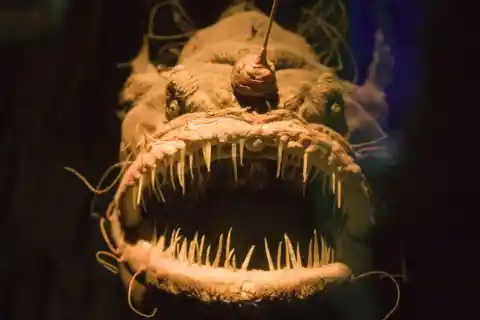
You’ve probably already heard that only 5% of the great depths of the oceans have been explored. With its lowest point being a bit more than 6 miles, the ocean’s floor and its deepest points are impossible to be completely explored. This realization ignites our imagination and raises the question of what peculiar creatures may dwell in those uncharted depths, eagerly awaiting discovery.
The depths of the ocean harbor a tapestry of wonders yet to be unveiled, a testament to the endless mysteries that await us beneath the waves. Now let’s dive underneath to see deep sea creatures that look like they were pulled out of a horror movie.
Viperfish
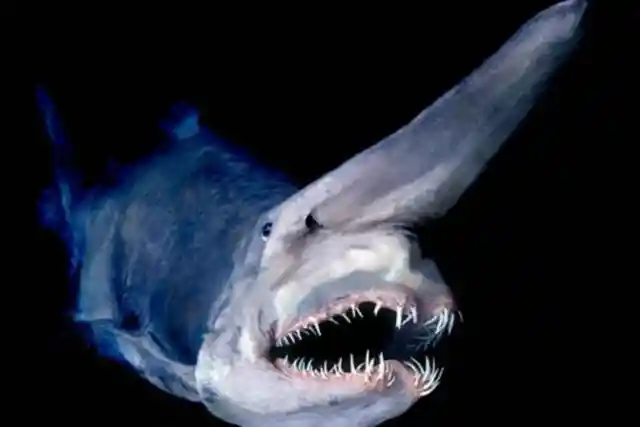
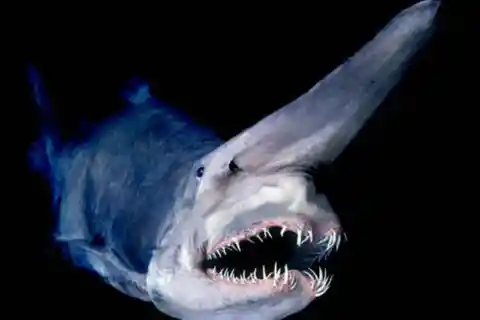
Even the shark from the famous movie Jaws has nothing against this terrifying shark that dwells in the depths of the ocean. This sharp is undoubtedly creepy-looking, but it is notoriously bad at swimming and has really bad eyesight.
It can grow up to an average of 10 to 13 feet in length upon maturity, but it can grow much bigger than that. There is one goblin shark that was measured to be an amazing 20 feet in 2000.
Zombie Worms
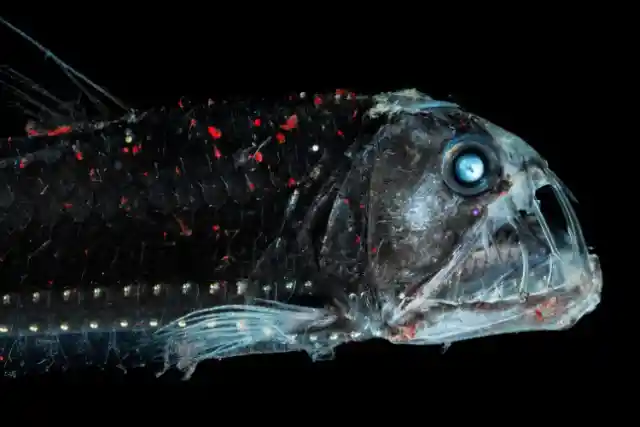
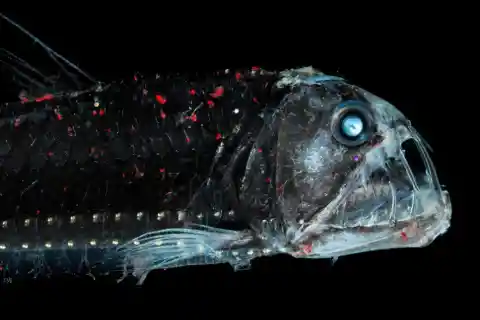
The viperfish, a fascinating deep-sea inhabitant, typically resides around 5,000 feet beneath the ocean’s surface during the day. However, it ascends to shallower waters during the nighttime when it hunts. These remarkable fish possess luminescent patches on their bodies known as photophores, which serve as alluring beacons to attract unsuspecting prey.
One of their most astonishing abilities lies in their capacity to remain perfectly motionless for extended periods of time, patiently awaiting potential victims. In the wild, viperfish can thrive for a lifespan of 30 to 40 years. Unfortunately, their adaptability to captivity is limited, and their survival is often restricted to just a few hours in such conditions.
Gulper Eel
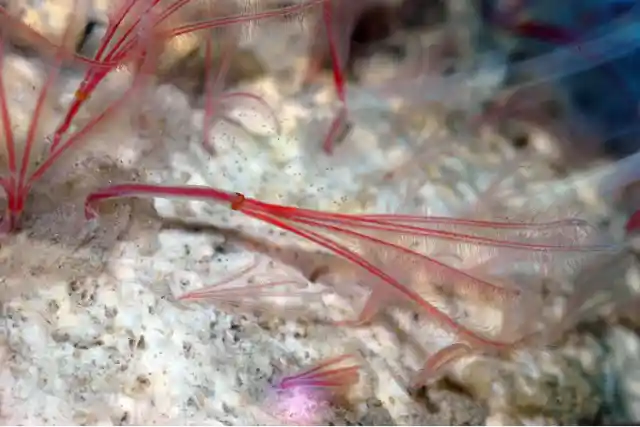
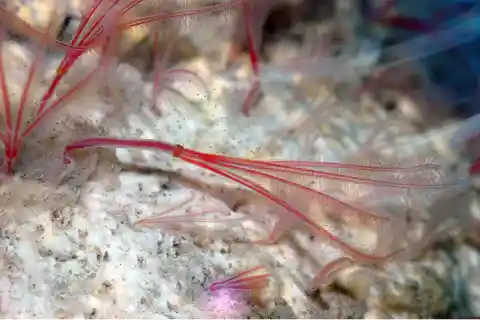
No, these won’t turn you into a zombie like the ones in the zombie series Kingdom, but it does make you feel cautious about it. Imagination aside, these creatures are quite extraordinary and have no digestive system at all. Now, you might wonder, how does it sustain itself then? The answer lies in its remarkable feeding strategy.
These creatures burrow into the bones of deceased whales and release an acid that dissolves the bone structure. By absorbing the nutrients from the collagen within the bones, it sustains its nutritional needs. In a significant scientific discovery, researchers at the Monterey Bay Aquarium Research Institute encountered the genus for the first time in 2002.
This creature can grow to be several meters and lives in the depths of the ocean at around 500 to 6,000 feet in both tropical and temperate oceans. It utilizes its remarkably large, loosely hinged mouth to consume small crustaceans, but it’s discovered that it can actually eat things much bigger than itself.
Due to its extreme habitat, the gulper eel has not been extensively observed, with certain species only documented during their larval stage. The profound depths where it resides pose significant challenges for scientific exploration and understanding.
Hag Fish
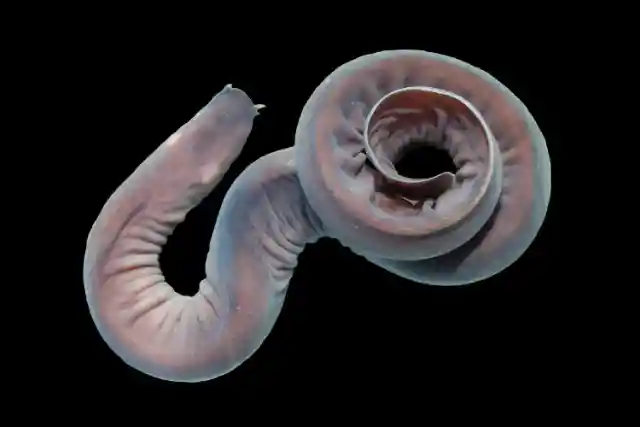

The hagfish, despite its disgusting appearance, possesses fascinating survival adaptations. This creature has unique feeding habits, as it is known to enter the body of dead or dying animals and consume them from the inside. However, the hagfish’s slow metabolism allows it to go for months without the need for feeding, therefore it can endure long periods of food scarcity.
In addition to its peculiar eating habits, the hagfish possesses a remarkable defense mechanism. When faced with danger, it secretes a slimy substance that serves to distract and disorient its predators. This mucous-like slime creates a slippery barrier, making it difficult for predators to capture the hagfish. This defense mechanism allows it to evade potential harm and continue its existence in the ocean depths.
Stargazer
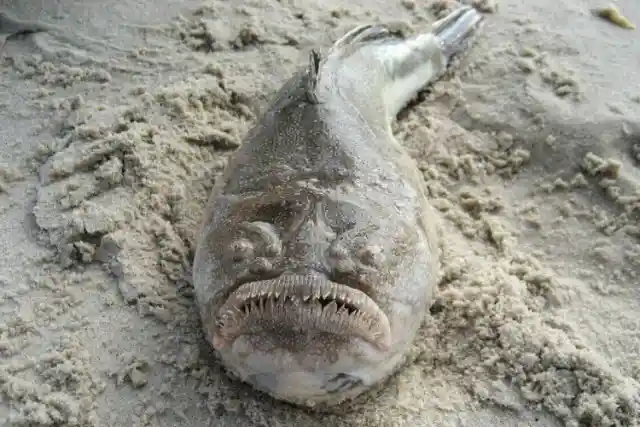
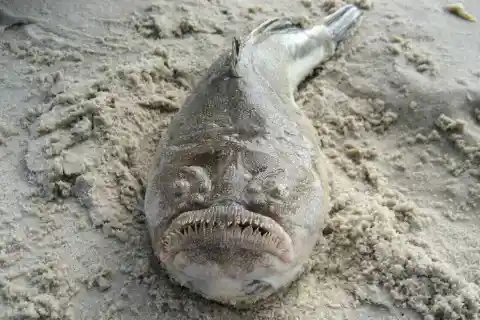
Both found in shallow and deep waters, though rarely beyond 60 meters, these creatures are skilled hunters. They camouflage themselves and close their eyes on the ocean’s sandy floor, waiting to ambush any unsuspecting prey that may pass by. Their top-facing eyes also help them during hunting.
Overall, they have a peculiar appearance, along with long fins especially for their size. They also possess a venom spine just above their pectoral fins. Some other species also have a worm-like lure growing out of their mouths. In addition, they’re also capable of discharging up to 50 volts of electricity from the modified muscle tissue just posterior to the eyes.
Frilled Shark
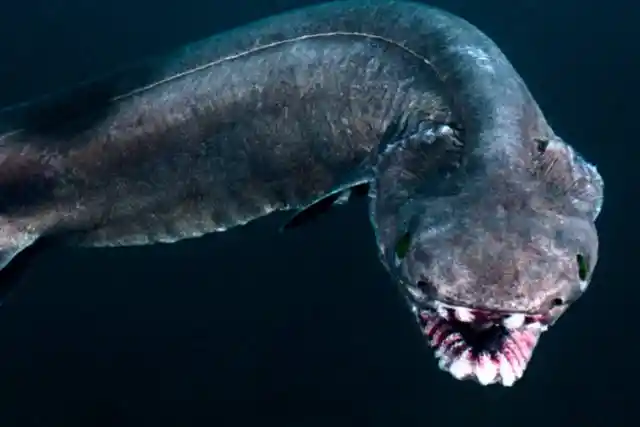
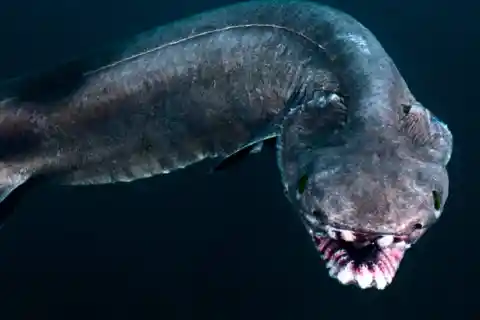
Scientists speculate that this formidable predator engulfs its prey whole, reminiscent of a snake’s feeding technique. Its diet primarily consists of cephalopods, bony fish, and smaller sharks. Under the cover of darkness, it ventures to the ocean’s surface to satisfy its appetite.
During daylight hours, it typically resides at depths of no more than 3,900 feet, although there have been instances of accidental captures by fishermen as deep as 5,100 feet. In addition, while a typical gestation period lasts nine months, the frilled shark’s reproductive journey spans an astonishing three-and-a-half years!
Vampire Squid
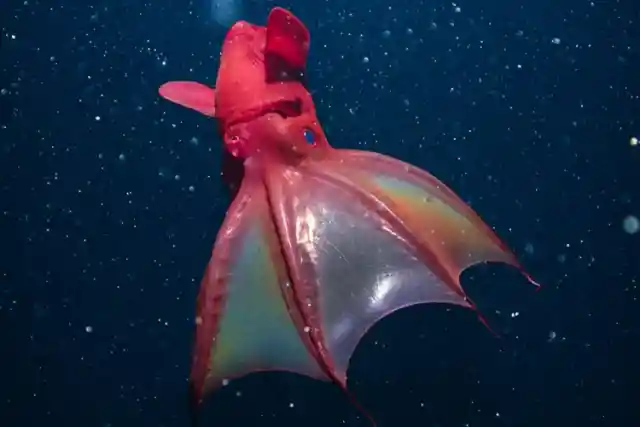
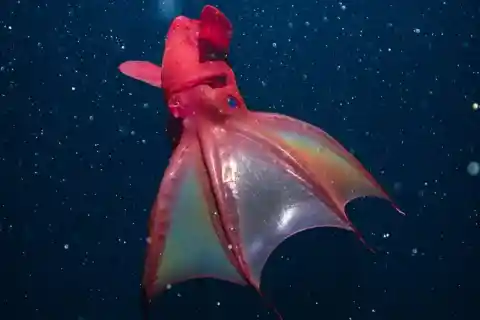
Contrary to its name, the vampire squid doesn’t suck blood at all nor is it even a squid. It actually feeds on detritus, otherwise known as marine snow or also known as ocean dandruff in the deep sea. It is dark in color and has webbed tentacles are actually the inspiration for its name.
Other than its name, its eyes are actually the more striking feature of it, as it has the biggest eyes of any living animal proportional to its body. Its eyes are also not blue, but in fact clear and reflect the surrounding water hence why it appears that color.
Deep-Sea Hatchetfish
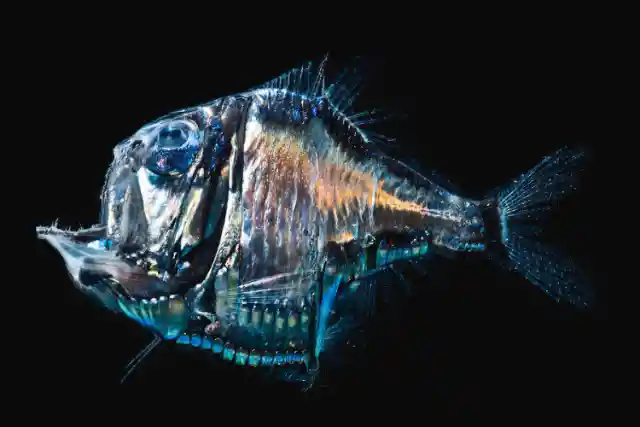
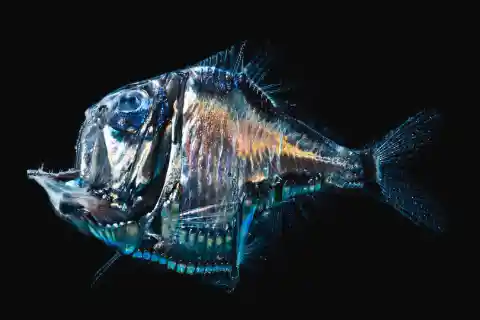
The deep-sea hatchetfish, distinct from its distant freshwater relative, exhibits a perpetual expression of fear. Measuring around 4.7 inches in length, this remarkable creature resides in the depths of warm and temperate waters, reaching depths of nearly 5,000 feet. What sets them apart is their fascinating adaptation of bioluminescent photophores.
These specialized organs allow hatchetfish to employ counter-illumination, matching the intensity of light from above. By doing so, they blend seamlessly with the illuminated surface, evading predators lurking beneath. It’s truly awe-inspiring how nature has shaped these unique survival strategies.
Big Red Jellyfish
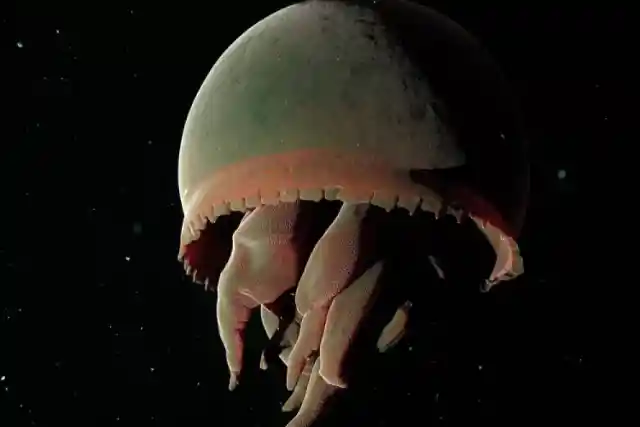
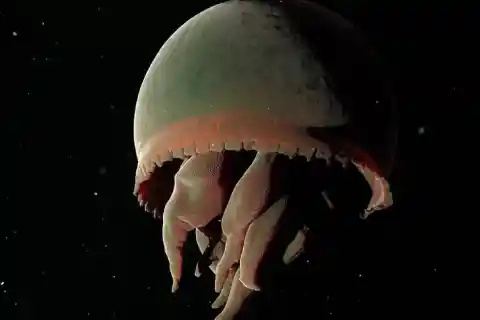
It doesn’t look much in the picture, but this giant armored jellyfish can actually grow over three feet in diameter, which is startlingly large. Instead of how other jellyfish normally catch their prey (stinging them with their tentacles), this creature uses four to seven of its fleshy muscle arms.
With its size, this creature is something hard to miss if you see it in the ocean, but only if you dive as deep as 650 to 1,500 feet as that’s where its natural habitat is. They can be found in North America, Baja California, Hawaii, and Japan.
Dragonfish
With its ferocious face and elongated body, it’s no wonder it’s called the dragonfish because of its likeness to the legendary creature in Chinese mythology. Though despite its name, it’s actually quite small and only measures around 6 inches in length. But don’t let this fool you as it’s a ferocious predator with extremely large teeth compared to its body size.
It’s also one of the creatures in the deep sea that is bioluminescence, which is produced by a special organ called a photophore. Like most of the bioluminescent deep sea creatures, it also uses its light to attract prey.
Roughnose Grenadier
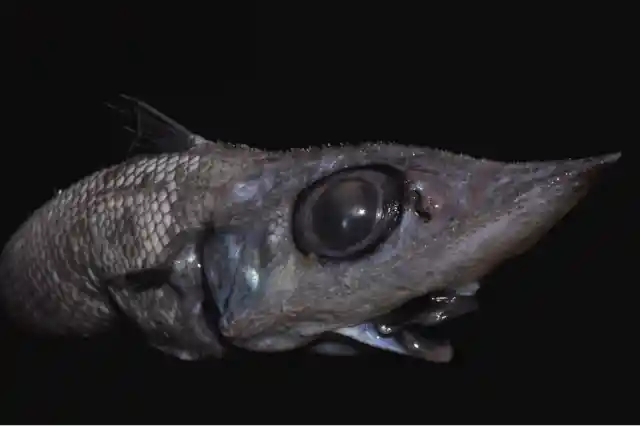

These creatures are estimated to make up around 15% of the dwellers of the great depths of the ocean floor. They can be found anywhere from 400 to 1,600 meters below the ocean.
Due to their deep-dwelling and the harsh environment of their habitat, they have physically evolved in order to adapt to the dark depths of the ocean. With its almost needle-like nose and bulbous black eyes, it really is one freaky-looking fish in the deep sea.
Pacific Blackdragon
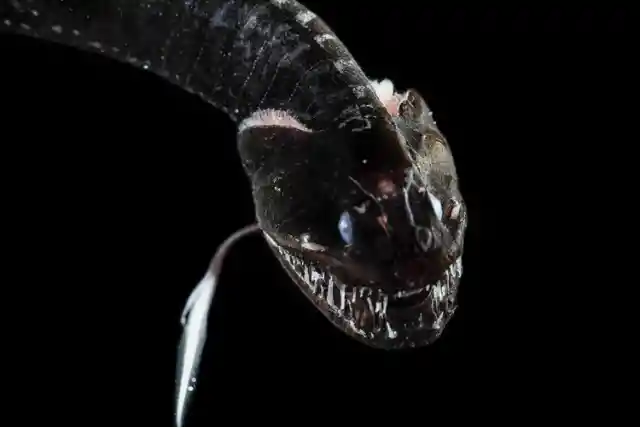
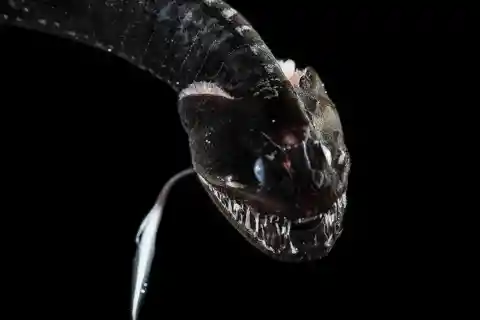
These creatures’ bodies are coated with black tissue that blocks out any light that may be produced by bioluminescent animals that they eat. They have a separate light organ at the end of the long barbel that hangs down from the chin. This organ is used as a lure to attract prey toward their teeth-filled mouths. Adults reach approximately two feet in length and are skinny and eel-like, though these fish are not closely related to true eels.
Even though these creatures live in deep waters, the preferred depths of the Pacific blackdragon receive some sunlight during the day, so the eyes are large and well-developed. Interestingly, males don’t normally have these characteristics and are oftentimes smaller in size, have no teeth, stomach, or barbel — thus unable to feed. They only live long enough to mate before they eventually die.
Bigfin Squid
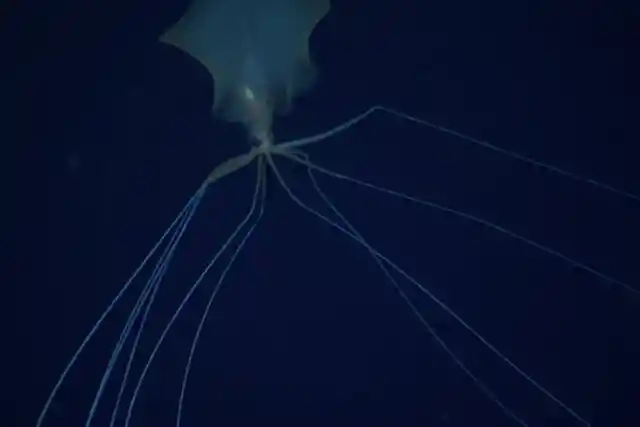
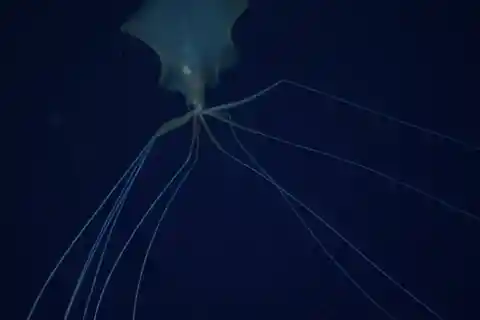
With their long and slender tentacles reaching astonishing lengths of up to 26 feet, these squids possess an uncanny resemblance to extraterrestrial beings. However, despite their intriguing appearance, the bigfin squids remain shrouded in mystery, as they have rarely been encountered, rendering our knowledge about them quite limited.
The elusive nature of these creatures has made it challenging for researchers to capture or sample adult specimens, leaving many questions unanswered. Consequently, our understanding of their feeding habits and other aspects of their behavior remains pretty much unknown for the most part.
Black Swallower
With the help of its expanding stomach, largemouth, and long lower jaw, this creature can eat things much larger than itself despite only being 25 cm long. It’s also a stealthy hunter with its dark, scaleless body. Its teeth are hooked and backward-pointing, which retract to make room for prey.
Their natural habitat is around 3,000 to 10,000 feet, spending most of their time in the twilight zone, or even deeper bathypelagic zone. They’re commonly found in the tropical Atlantic and Gulf of Mexico.
Snaggletooth
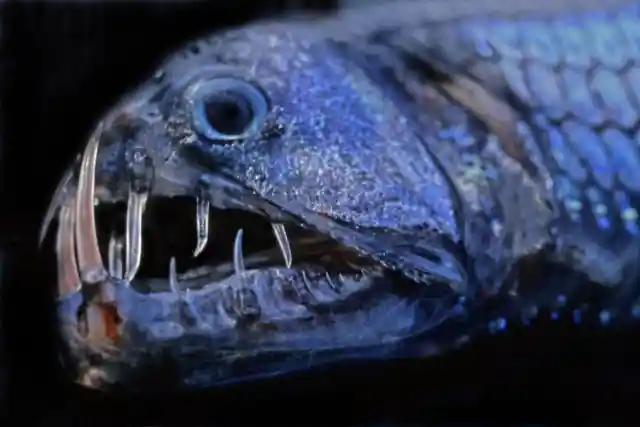
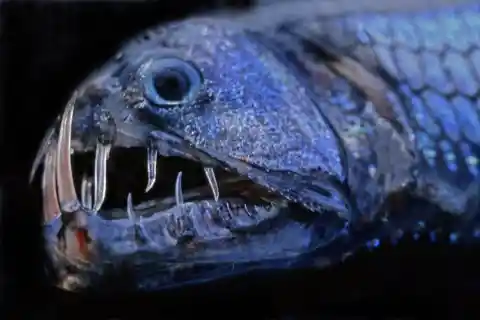
Despite its small body, reaching about 6 inches in length, this creature has long, menacing fangs — also the largest in the ocean in proportion to its body. It has evolved to accommodate its massive fangs, which allows it to close its mouth. It has special pouches on the roofs of their mouth that prevents its teeth from piercing its brain when its mouth closes.
This creature is one of the deepest living fish, having been found in waters as deep as 16,400 feet. However, it’s also commonly between the depths of 1,600 to 6,600 feet. Most of the time, it stays in the deep but goes up to shallow waters to feed.
Bloody-Belly Comb Jelly
Brilliant and seemingly luminescent, the bloody-belly comb jelly undoubtedly ranks amongst the most exquisite sea creature inhabiting the vast ocean. It dwells in the mesopelagic zone, often referred to as the “twilight zone” of the ocean.
The resplendent spectacle displayed by this creature is a result of light diffraction and refraction of its minuscule, transparent, hairlike cilia. Its striking deep red hue serves as a defense mechanism, concealing its bioluminescence from potential predators.
Fangtooth
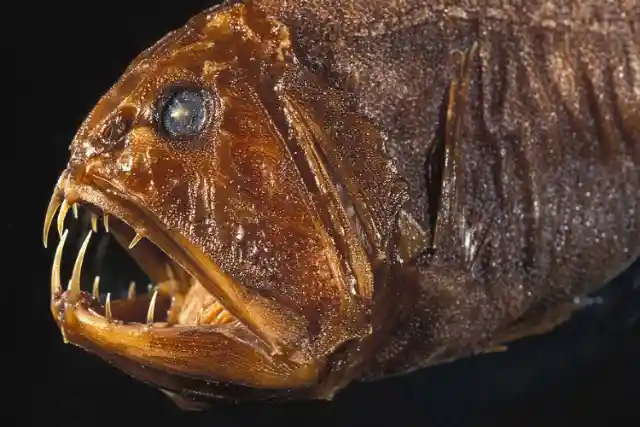

Despite its scary looks and fierce name, this creature is actually quite defenseless. It’s small and its milky blue eyes aren’t all that useful, as this creature relies on its lateral line (a sensitive organ that runs down the side of its body) to pick up movement and temperature changes.
Due to its environment, it has evolved a special black skin with a concentrated pigment, which absorbs 99.5% of light. This effectively lets it hide in plain sight and avoid other predators.
Angler Fish
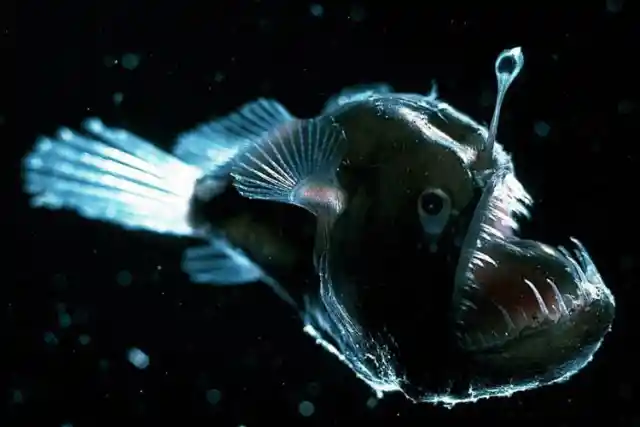
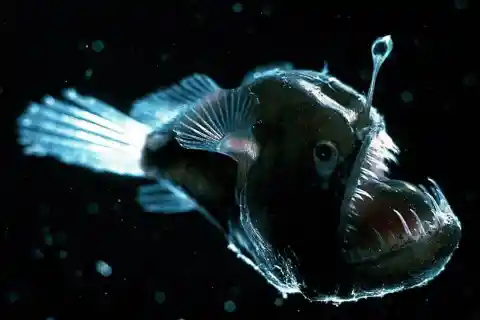
You may have seen the angler fish in the popular kids’ movie Finding Nemo. This bizarre-looking creature has a unique hunting technique when it feeds. Like what happened in the movie, it lures its prey using the luminescent light before taking a huge bite of its meal. They are found in the deep sea and on continental shelves all over the world.
Interestingly, males (significantly smaller than females) cannot survive without latching on to a female to act as a host. It bites onto the female angler fish’s skin, and the two fuses together until they share the same circulatory system. What’s more bizarre than that?
Marrus Orthocanna
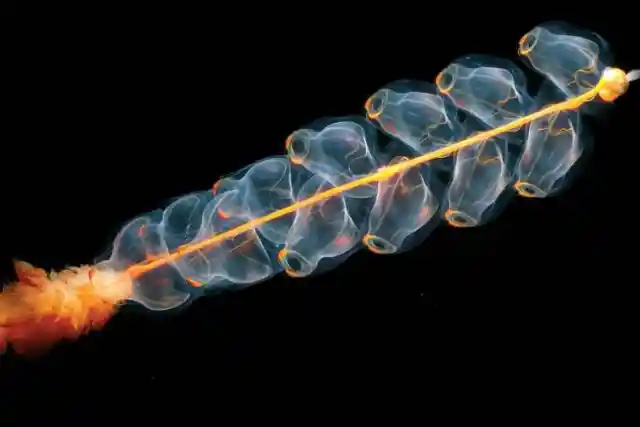
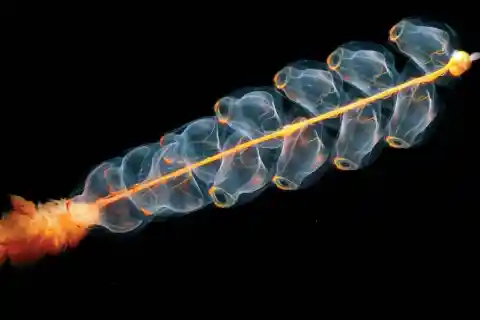
These creatures can exceed more than 1 to 2 meters in length with their swimming end about 10 cm long. They are typically transparent with some hues of red and orange in some parts of their body. For its feeding, they pause and deploy their tentacles, which create a 30 to 50-centimeter fishing curtain from their body stem.
They’re a type of siphonophores and are mostly between 200 to 800 meters, but bathypelagic records show that they can go be as deep as 2,000 meters. Primarily in the Arctic, but they can also be found in the subarctic Atlantic.
Monkfish
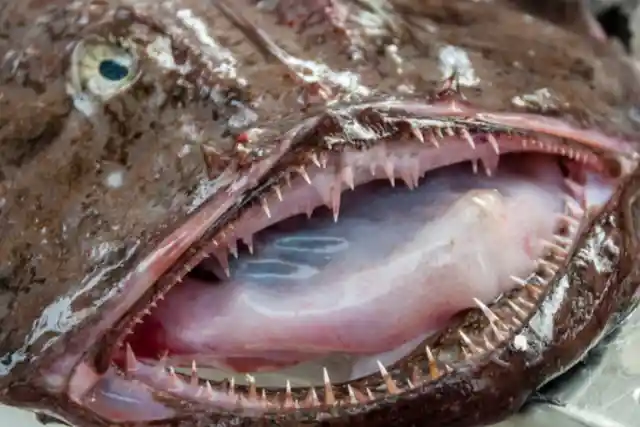
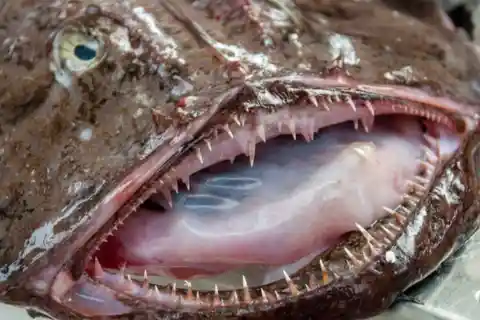
This creature has a massive head that takes half of its body, matched with a huge, gaping mouth that is complete with rows of sharp, needle-like teeth. It certainly has quite a frightening appearance, even occasionally called a sea devil, but boy is it delicious when cooked.
It’s even known as the tenderloin of the sea or the poor man’s lobster. It stays at depths of around 50 meters, sometimes even deeper than this. This creature can be found in the northeast Atlantic and parts of the Irish Sea, the English Channel, and the North Sea.
Glass Octopus
In 2021, the glass octopus was recently discovered during an extensive 34-day expedition, spanning 182 hours of meticulous scanning of the seafloor near the remote Phoenix Islands in the central Pacific Ocean, specifically off the coast of Kiribati. With a potential length of up to 18 inches, the glass octopus inhabits tropical and subtropical waters worldwide, venturing to depths as profound as 984 feet.
What sets this captivating creature apart is its translucent nature, rendering its body virtually transparent. Remarkably, it appears nearly colorless, save for the notable opacity of its eyes, optic nerve, and digestive tract.
Giant Isopod
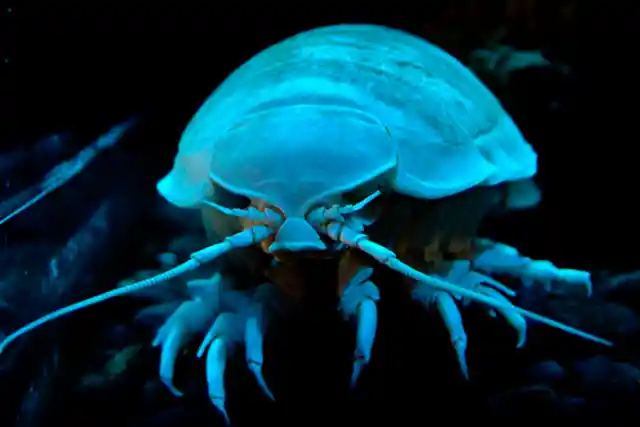
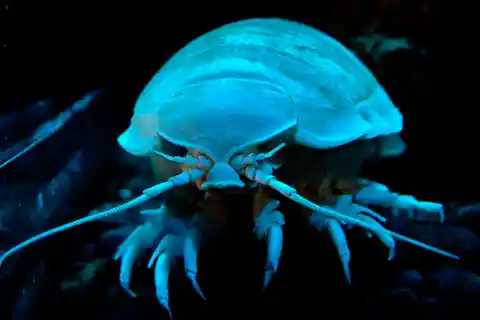
You may have wondered up to this point: what lives at the absolute depths of the ocean at its bottom? One of the most terrifying creatures living down there is the giant isopod that can survive in the immense pressure and freezing temperatures of the North Atlantic and the Arctic Ocean.
These creatures can grow up to more than a foot in length. They’re related to the pill bugs on land, but how come their land relative don’t grow as big? Firstly, let’s thank that they don’t. But to answer the question, it’s because of deep-sea gigantism, wherein animals living in the abyss grow to be larger than their shallow-water or land counterparts because of colder temperatures, increased dissolved oxygen, and food scarcity.
Barreleye
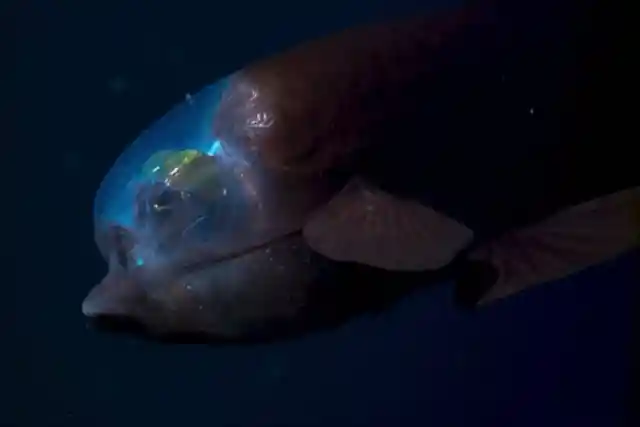
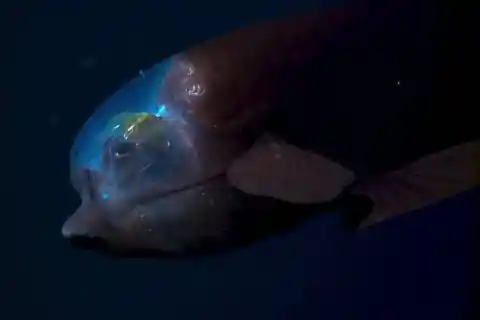
This creature has an intriguing feature about it, which is its big green eyes that are normally pointed upwards to detect potential prey. Adding to its intrigue, this fish also possesses a transparent, dome-shaped head that aids in capturing any available light in the depths it inhabits.
In 2021, researchers finally caught footage of the creature at a depth of around 2,000 in the Monterey Submarine Canyon using a remotely operated vehicle. Prior to that, researchers had only ever seen the fish nine times before, despite having completed well over 5,000 dives.
Giant Phantom Jellyfish
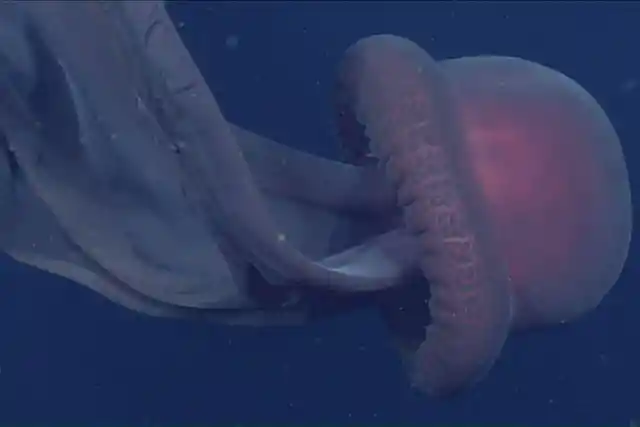
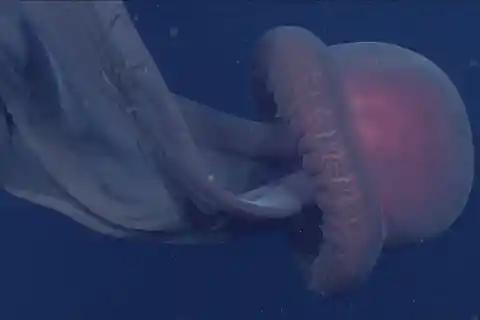
Its resemblance to a spectral apparition is striking, enhanced further by its immense size. With a bell spanning an impressive 3.3 feet in width and arms extending up to 33 feet in length, this majestic creature commands attention. Encounters with the giant phantom jellyfish have been rare, with only 110 sightings recorded over a span of 110 years.
However, researchers believe that this creature inhabits various regions worldwide, excluding the Arctic Ocean. Residing in the midnight zone of the ocean, at staggering depths of nearly 22,000 feet, it ventures through the abyssal depths, captivating the imagination with its otherworldly presence.
Giant Siphonophore

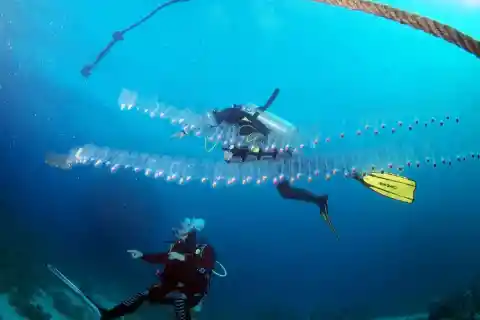
The giant siphonophore is an intriguing invertebrate that thrives in the depths of the sea, approximately 3,300 feet below the surface. This creature holds the distinction of being the second-longest known sea organism, surpassed only by the bootlace worm, with an impressive length reaching up to 160 feet.
What makes the giant siphonophore even more fascinating is that it is not a single organism but rather a collective of intricate components known as zooids. Each zooid serves a distinct function, working in harmony to facilitate the seamless operation of the entire siphonophore colony. Some zooids specialize in capturing prey, while others take on the vital roles of food digestion or propelling the entire organism through the vast expanse of the ocean.
Blobfish
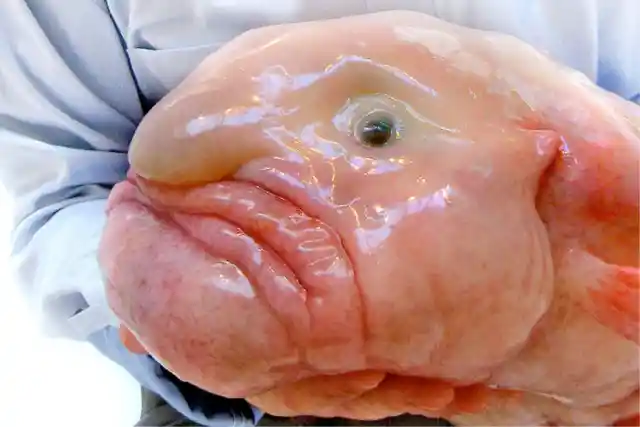
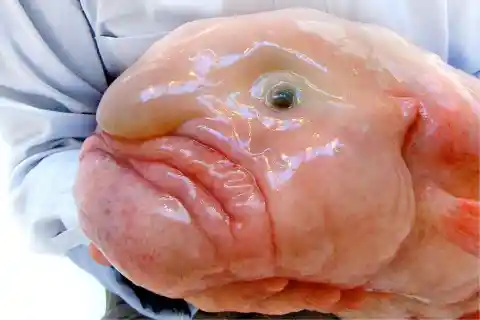
While this picture looks like a photoshopped meme, this creature is actually real and is called the Blobfish. Found in the coasts of Australia and New Zealand, it lives in deep waters (of over 2,000 meters) where it actually looks a little different compared to when it’s off water.
The pressure of the bottom of the ocean keeps its body intact, so it puffs up due to decompression when brought up to the surface. The funny thing about the blobfish is that the Ugly Animal Preservation Society voted it as the world’s ugliest animal in 2013.
Coffinfish
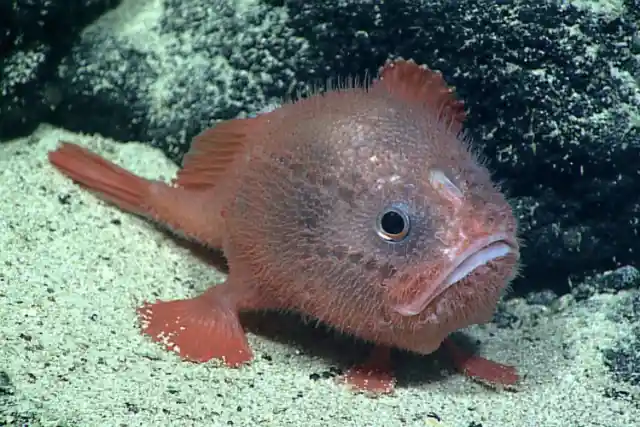
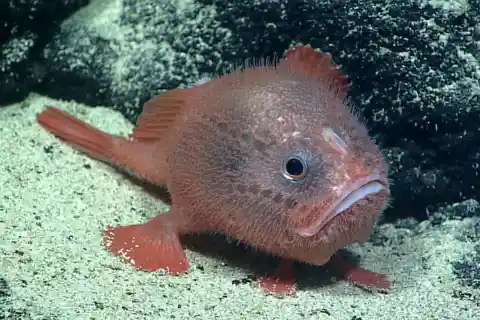
This creature is small with a soft, gelatinous body. It has a variety of colors, from pinkish to reddish-orange. It shares the same type of defense mechanism as a pufferfish, wherein it enlarges itself upon sensing danger.
But unlike the pufferfish, the coffinfish produces spikes all over its body as it puffs. It is typically found at depths of around 8,200 feet and in the oceans of the Pacific, Atlantic, and Indian Oceans, including Australian waters.
Dumbo Octopus

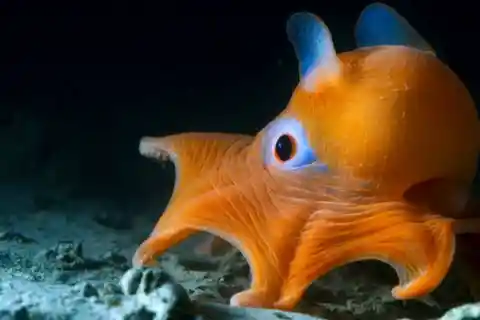
Because of its undeniable cuteness and elephant-like fins adorning the sides of its mantle, this not-so-terrifying creature was affectionately named after the endearing main character from the 1941 Disney movie Dumbo.
This captivating creature stands a mere eight inches tall and holds the distinction of being the deepest-dwelling species among octopuses, flourishing at remarkable depths ranging from 9,800 to 23,000 feet. Though they are believed to inhabit the depths of all the world’s oceans, encountering them in the wild is an exceptionally rare occurrence.
Christmas Tree Worms
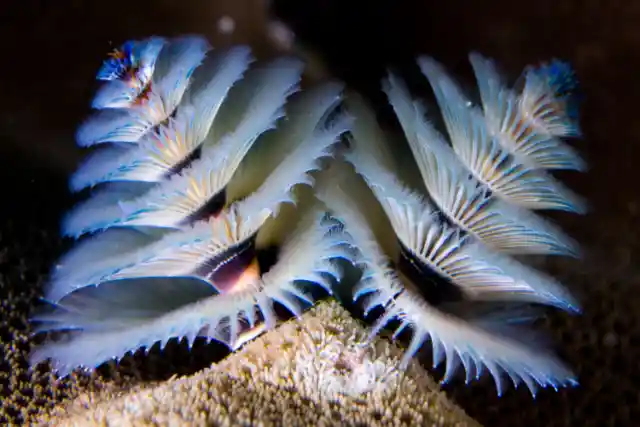

Wherever these creatures are, it’s always Christmas time. Jokes aside, they do resemble Christmas trees, hence why they’re called Christmas tree worms in the first place. These creatures live all throughout the world’s tropical oceans, from the Caribbean to the Indo-Pacific, often taking up residence within coral heads or on species of giant clams.
The uppermost part of the worm serves as its mouth, while the feather-like “branches” lining its sides are tentacles that aid in directing food toward its digestive tract.
Japanese Spider Crab
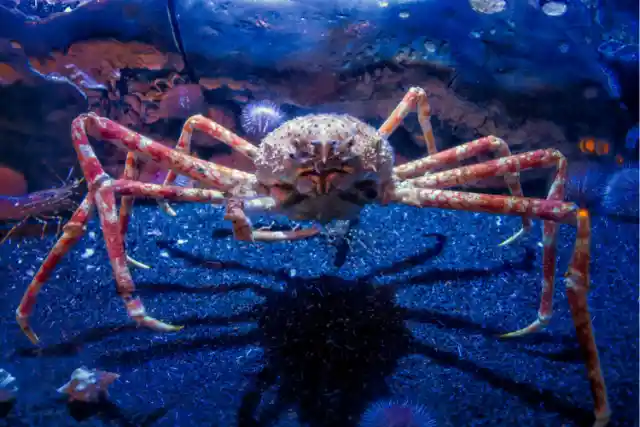
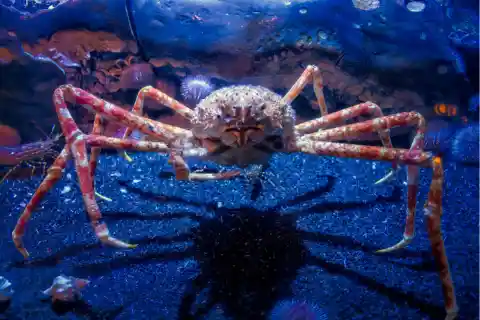
Don’t be fooled. These are huge in real life. This is the Japanese spider crab, an arthropod boasting an unparalleled leg span of 12 feet or more. With a weight that can reach up to an astonishing 42 pounds, encountering these creatures is an experience to behold. Thriving in the deep ocean waters surrounding Japan, they often inhabit areas near underwater vents on the ocean floor, where their unique adaptations come to life.
While renowned as a culinary delicacy in Japanese cuisine, this creature has benefited from conservation efforts aimed at safeguarding its population from overfishing. This mindful approach ensures their preservation for generations to come, allowing these captivating creatures to continue their existence as remarkable denizens of the ocean depths.
Red Handfish
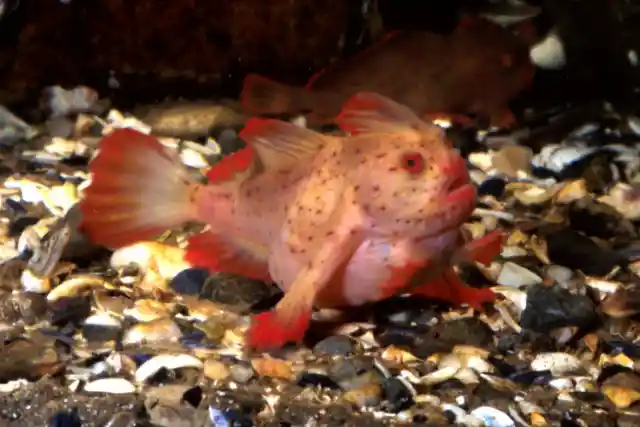

Its unique appearance, resembling a frog-like species, sets it apart in the underwater realm. However, it’s not just its peculiar looks that make the red handfish extraordinary — it also possesses a remarkable mode of locomotion. Unlike most fish, it eschews swimming and instead utilizes its dainty hands to traverse the seafloor, as if walking on its own underwater journey.
This creature is an exceedingly rare species, confined to the confines of two small reefs nestled within Frederick Henry Bay in Tasmania. Such limited distribution contributes to its critical endangerment, leading to its classification under Australia’s Environment Protection and Biodiversity Conservation Act of 1999.
Chimaeras
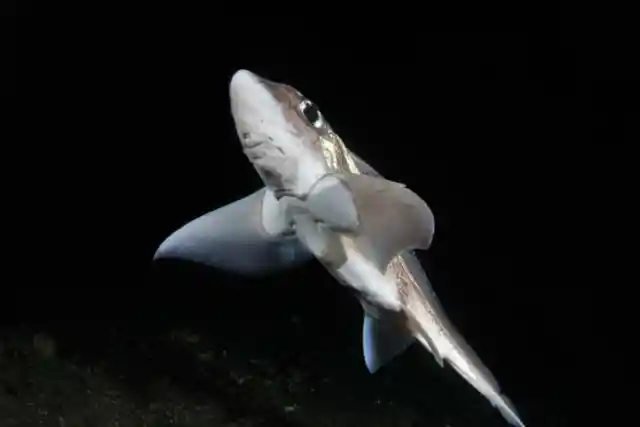
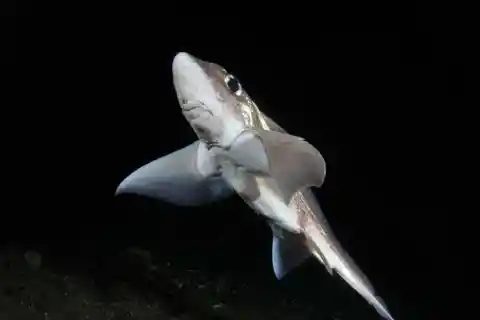
These creatures look nothing like the chimera in Greek mythology. In fact, they belong to the same lineage as sharks and rays, although they possess distinct characteristics. While they share a common ancestry, chimaeras should not be mistaken for sharks. These cartilaginous fish primarily inhabit the depths of temperate waters, typically residing at depths of 8,500 feet. On occasion, they may venture closer to the surface but seldom exceed depths of 660 feet.
These ancient beings have left few traces in the fossil record, making their evolutionary history a captivating puzzle. Researchers hypothesize that the last common ancestor between chimaeras and their shark and ray relatives likely perished approximately 400 million years ago.
Sea Pig
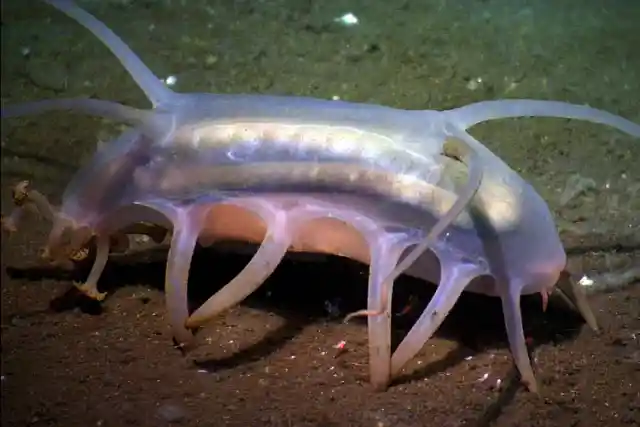
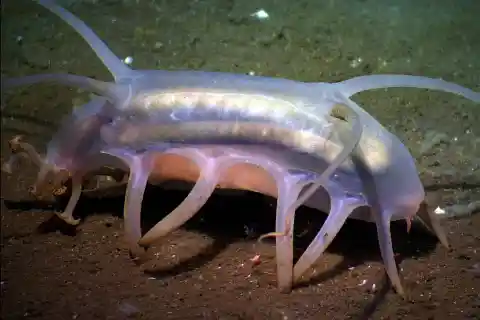
These interesting-looking creatures traverse the seafloor in the deepest reaches of the ocean, where depths range from 4,000 to 16,000 feet. Their presence in these remote and inaccessible regions has posed challenges for researchers, leaving much of their lives shrouded in mystery. As a result, crucial aspects such as their mating habits and average lifespan remain unknown to us.
However, it has been discovered that they fulfill a vital ecological role. They diligently scavenge decayed organic matter from the ocean floor, contributing to the recycling of nutrients in their habitat. Additionally, they display a remarkable behavior of safeguarding baby king crabs. Acting as nurturing protectors, they provide a platform for the young crabs to latch onto as they navigate the ocean floor, fostering their survival and growth.
Sea Angel
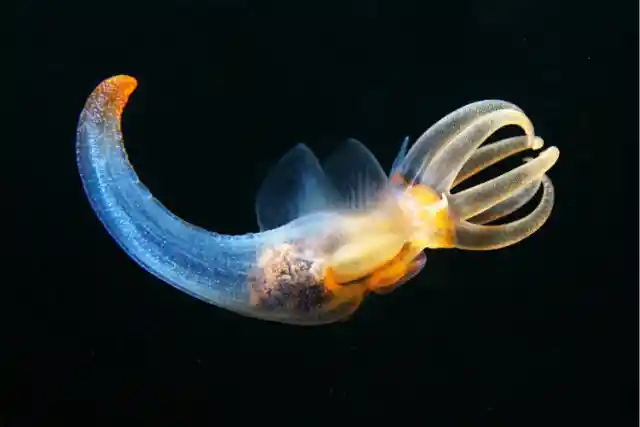
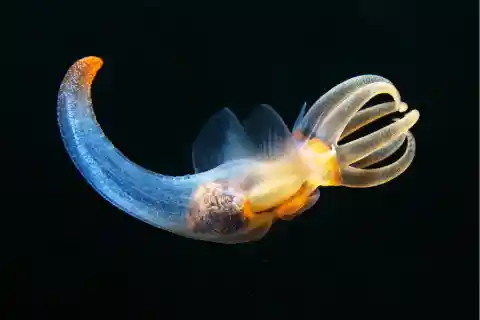
Sea angels, despite belonging to the gastropod family, possess an ethereal beauty that sets them apart from their slug-like relatives. Their delicate, transparent forms evoke a sense of grace and charm. What’s even more remarkable is their unique adaptation to swimming. Over time, their muscular feet have evolved into elegant “wings,” allowing them to navigate through the open waters with remarkable ease.
Feeding on their fellow pteropods, sea angels employ a well-coordinated strategy. Using their radula—a specialized feeding organ found in mollusks—and their tentacles, they skillfully ambush their prey. This combination of tools enables them to capture and consume their desired sustenance.
Colossal Squid


No, this isn’t the rename of the giant squid. The colossal squid is the largest known species of squid by mass in existence. It’s been confirmed through discovered specimens that these creatures weigh at least 1,091 pounds and can reach up to 1,500 pounds as speculated by researchers.
No worries, the chances of encountering these creatures in person are exceedingly slim, as the adults typically reside at depths exceeding 3,200 feet, and even deeper. However, throughout human history, there have been accounts of interactions between these creatures and sailors. It is believed that these encounters might have inspired the legendary tales of the Kraken, a colossal sea creature of myth and folklore.
Scaly-Foot Gastropod
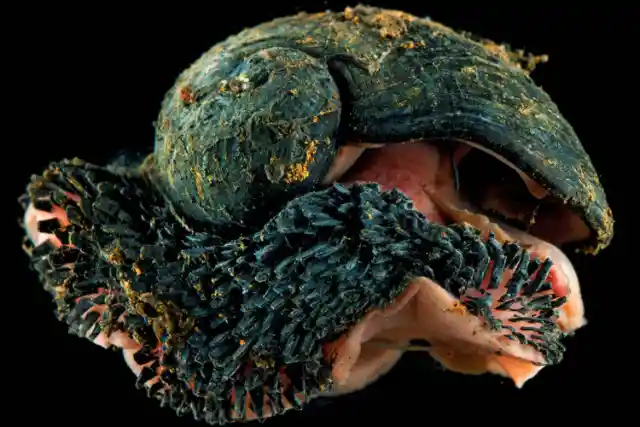
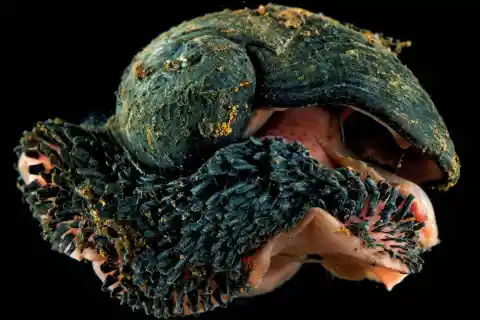
This creature lives in the deep, on searing hydrothermal vents. Here, temperatures can reach more than 572 F and it’s constantly bathed in toxic chemicals. From its looks, you would think this snail’s shell is the armor — for protection, but in a way that you’re not thinking.
Its scales are its protection from not other prey but from a toxic threat within it. There is a special pouch in its throat that converts the chemicals from the vents into energy thus sustaining this amazing creature.
Comb Jellies
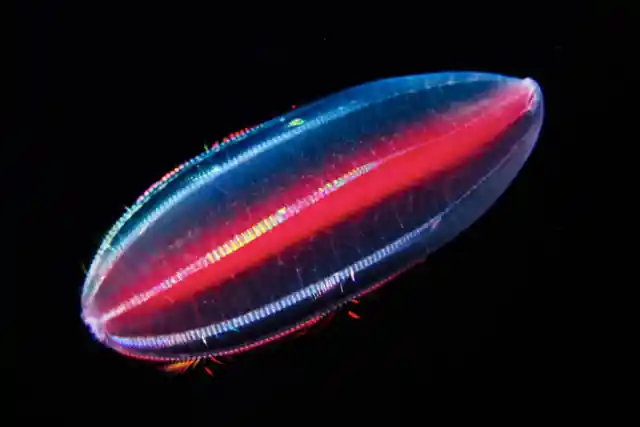
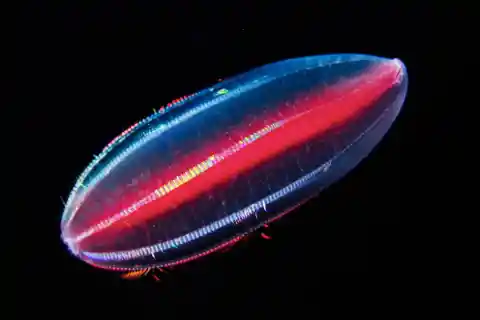
With their alien-like appearance, their thin colorful skin stretches over their body, which is actually 95% water. These creatures are pretty enthralling to look at, but they’re terrifying no less. They’re carnivorous and feed on whatever passes by them. They use their colloblasts (sticky cells) that are lined on their tentacles to capture their prey.
They can also eat other comb jellies much larger than themselves by biting off chunks with special cilia structures in their mouths. Though they’re related to jellyfish, they’re not as closely related. They also drift the waters of our global ocean.
Squidworm
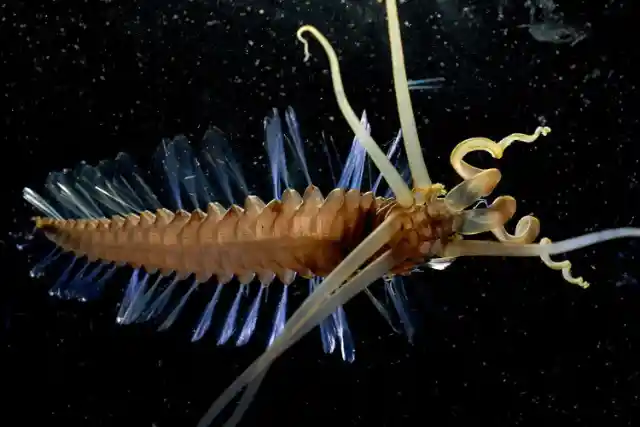
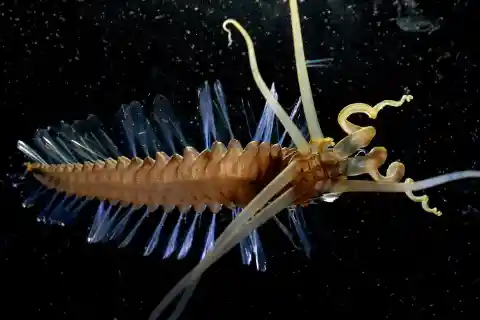
This bizarre-looking thing is called a squidworm, which was found and discovered in the deep waters of the Celebes Sea. It possesses 10 fragile tentacle-like appendages at its head as long as its body and more than 25 pairs of translucent white paddles on its sides for swimming. Its slimy body is flattened, about 3.5 inches long, and is eyeless, relying on the organs on its head for touch or smell.
More of these critters were caught roughly 6,600 to 9,9900 feet below the ocean’s surface. They typically feed on marine snow, including fecal material, dead animals, and cast-off mucus. Gross, I know.
Pink Manta Ray
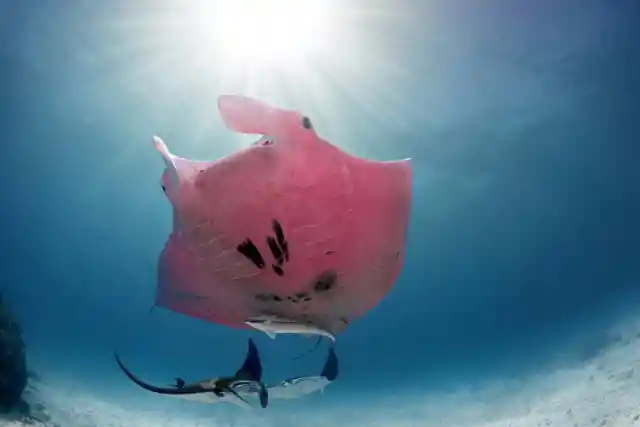
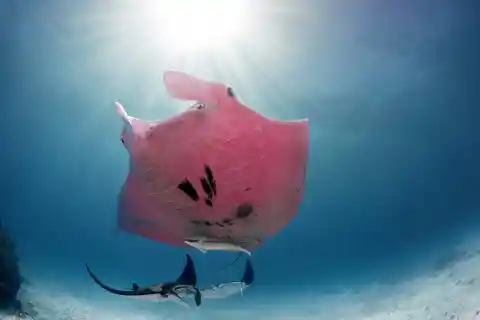
While they mostly live in shallow waters, this creature is something you’d hardly see at all. Manta rays are normally pure black, pure white, or a mix of both. But this one is pink — yes, pink. This manta ray is so rare that only one has ever been seen before. It was discovered in 2015 on the southernmost island of Australia’s Great Barrier Reef.
It’s around 11 feet bit, and its coloring is not an effect of an infection or its diet. It’s completely natural, and scientists’ leading theory is that the color is caused by a mutation in its expression of melanin. But whatever it is, the pink manta ray is certainly a sight to behold!